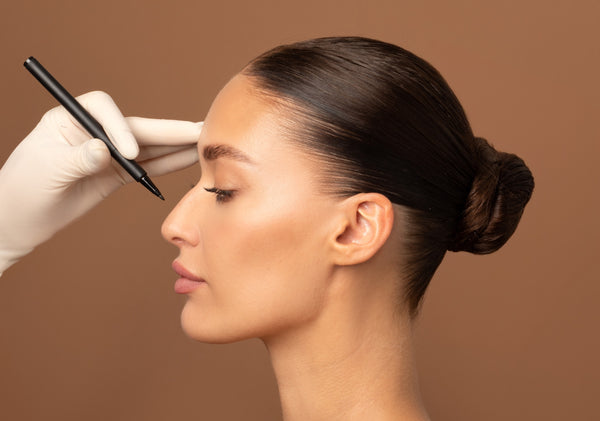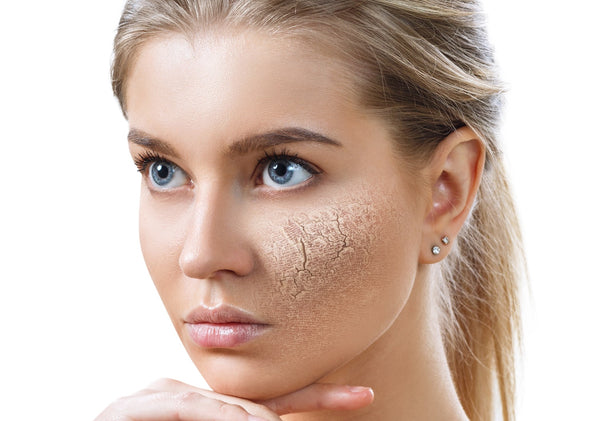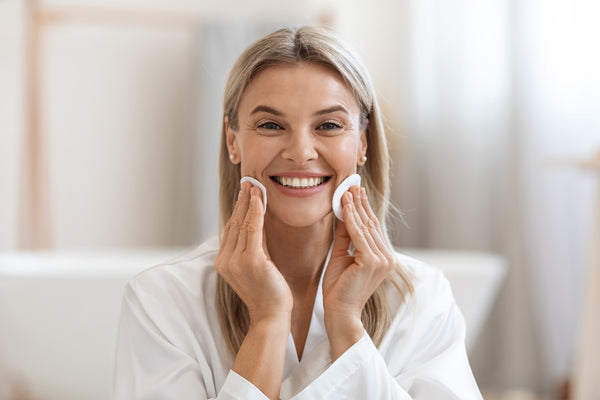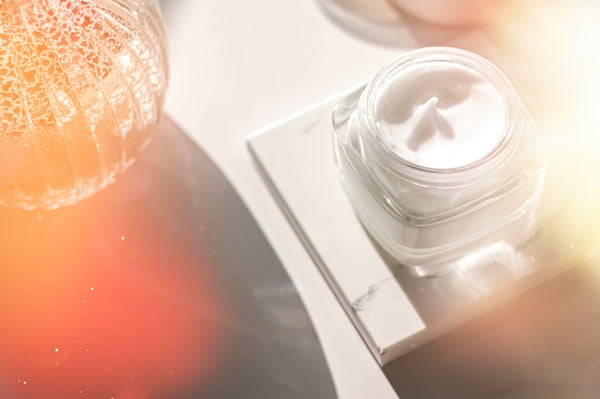How to Prepare and Care for Your Face When Having Laser Treatment

Modern technology has made it easier than ever to slow down the aging process. When it comes to laser treatments, there are many different styles and options to improve your skin's tone, pigmentation, and tightness. Additionally, lasers are beneficial for getting rid of unwanted hair using laser hair removal.
Because of the intensity of the lasers, it's essential that you follow specific steps before and after the treatment. You will have recommendations from your doctor or aesthetician to help prepare the skin for the laser and aftercare treatments.
Here are a few things you need to know about how laser treatments work and steps to follow before laser hair removal and aftercare to support comfort and fast healing.
Laser Treatments: How They Work
Talk to any cosmetic skincare expert, and you will learn that there are two types of laser treatments: skin resurfacing and laser hair removal. Both of these treatments are quite intensive and require care before and after the appointments.
- Laser Hair Removal: This laser targets the pigments in the hair follicles to damage them, helping to delay and stop unwanted hair growth. You'll need multiple treatments spaced out a month at a time to achieve the desired results.
- Skin Resurfacing: When wrinkles and scars affect your overall appearance, laser resurfacing is a great option to consider. This type of laser causes micro-injuries to the skin using heat. Then, the natural healing functions kick in, and collagen is boosted, helping to restore a more youthful appearance.
Additionally, there are two different types of lasers: ablative and non-ablative:
- Ablative: This laser is the most intensive type of treatment but is also the most effective. The laser causes skin wounds and removes the skin's outer layer. The heat penetrates the middle layer of skin (called the dermis) and helps to promote healing and collagen production. It might seem like a scary idea to remove the outer layer of skin, but it is an effective way to tighten the skin and leave it looking youthful and fresh.
- Non-Ablative: The other types of lasers use non-ablative technology. It doesn't cause wounds on the skin surface. Instead, collagen growth is promoted using heat, which helps improve the skin's tone and texture. Because it is a less-intensive laser, more treatments are required to achieve the desired results. But the benefit is that the recovery time is shorter since less damage is done to the skin.
If you need treatment with minimal recovery time, then non-ablative laser treatments are the way to go. However, if you want something with the most effectiveness, then talk to your provider about ablative treatments – but make sure to schedule your time, so you have the option to stay home during recovery.
Remember: the deeper the laser goes, the better results you will see. For example, an ablative treatment might only require 1 – 2 treatments before seeing results. But a non-ablative treatment might require 4 – 6 treatments to achieve results
Preparation: Taking Care of Your Skin Before Laser Treatments
 Regardless of the type of treatment you have scheduled, you must start preparing in the weeks before the appointment. It doesn't matter if it's an ablative or non-ablative laser. You need to make sure your skin is ready.
Regardless of the type of treatment you have scheduled, you must start preparing in the weeks before the appointment. It doesn't matter if it's an ablative or non-ablative laser. You need to make sure your skin is ready.
Preparation and post-appointment care help to optimize your results and reduce recovery time. When you are proactive about good skincare, you can be confident that you are maximizing the possibilities from this treatment.
Follow these tips before laser hair removal or skin resurfacing treatments:
Avoid the Sun
One of the most important steps for laser hair removal preparation is to make sure you avoid sun exposure. When sun damage happens before the laser treatment, it can increase the damage to the skin and cause more irritation and sensitivity.
Avoid UV exposure entirely for at least 1 – 2 weeks before treatment. If your skin is exposed to UV radiation, it exacerbates the scars or dark age spots, making the laser work harder during the treatment. So, avoid the sun. If your job requires you to be outside during the daylight hours, then apply sunscreen, use a hat, and stay in the shade as much as possible.
No Other Facial Treatments
Before laser hair removal or skin resurfacing, you'll need to hold off on other skincare and cosmetic services. Even something as simple as waxing to tweezing can cause irritation that will affect your laser treatment recovery.
For three weeks before the appointment, stay away from any other things that might cause irritation to the skin. For example, do not partake in microdermabrasion treatments, chemical peels, or any other intensive services.
Also, you shouldn't have any facial injections such as dermal fillers or Botox for at least 2 weeks before the laser treatment.
Use Quality Skincare Products
Not only should you be using quality anti-aging products, such as MD Glam, but it's also important to avoid certain products. It's important that you are consistent with cleansing, moisturizing, serums, and your normal skincare routine to pre-condition your skin before the treatment.
Avoid any skincare products that cause irritation, such as retinol. Talk to your provider to get advice about when you should discontinue retinol and when it is safe to start using retinol again after the laser treatment.
Aftercare: Taking Care of Your Skin During Recovery
 Once your treatment is finished, follow all recommendations for skin resurfacing and laser hair removal aftercare. You can expect that the skin will be sensitive for a few days or weeks, depending on the strength of the laser that is used
Once your treatment is finished, follow all recommendations for skin resurfacing and laser hair removal aftercare. You can expect that the skin will be sensitive for a few days or weeks, depending on the strength of the laser that is used
Remember that the laser causes targeted injury to the skin. So, be careful to avoid additional damage or anything else that might irritate the skin while it is healing. Post-treatment care is essential to prevent complications such as scarring, hyperpigmentation, and infection.
When you consistently follow the recommendations for skin resurfacing and laser hair removal aftercare, it helps speed up your recovery time, reduce the risk of side effects, and enhance the overall results that are possible.
Never Pick or Scratch
The skin will have irritations and might develop scabs or other unusual textures. This occurrence is normal and will heal in the coming days and weeks. You must never scratch the skin, pick at the scabs, or peel the skin.
It's best to allow the natural healing processes to occur. So, avoid touching your face as much as possible during the healing time.
Avoid Exfoliants
The skin is vulnerable immediately after treatment, so you should avoid anything that exfoliates the surface. For example, don't use a mechanical skincare brush, products with exfoliating beads, or any type of microdermabrasion machine.
Also, stay away from chemical exfoliants, such as peels with glycolic acid or fruit enzymes. Even gentle products are too much on skin that has been recently treated with lasers.
After the skin starts healing, then exfoliants can help remove the dead skin cells. But you will need to wait for 1 – 2 weeks, based on your doctor's or aesthetician's recommendations.
Use Care with Facial Products
Certain types of serums and facial care products can cause irritation, so you should avoid serums such as vitamin C or retinol. Also, watch out for anything with scented ingredients, such as cleansers or lotions.
Most of the time, it's recommended that you avoid putting anything on the skin for the first 24 hours after the treatment. Then, you can use a gentle cleanser and a good moisturizer to promote healing. Your provider can offer recommendations about the ideal products to use.
Stay Out of the Sun
Similar to before the treatment, it's important to avoid sun exposure after laser treatment as well. Your skin is extra-sensitive during this time, which increases the risk of burning. Plus, you might still be feeling the effects of the laser, which means that your skin might burn or sting in the heat.
If possible, stay out of the sun completely for at least a week. Protect your face with sunscreen, hats, and shade when you need to go outside.
Don't Sweat for a Few Days
One recommendation for laser hair removal aftercare is to avoid sweating for the first few days after treatment. Even though you want to stay consistent with your workouts, you'll need to skip the gym for a few days. Also, don't go to a sauna or steam room.
You can take a shower, but it's best to use lukewarm water instead of a hot shower.
Once your skin starts healing, you can return to your normal physical activities. It's ok to start sweating a few days after the treatment.
Arriving at Your Appointment: Laser Hair Removal Preparation
Follow these tips on the day of your appointment:

- Clean Face: Wash your face before coming to the office. Your skin should be free of makeup, oils, lotions, deodorant, or any other products. You should wash your skin and then go to the appointment without applying anything to the skin.
- Physical Activity: You'll want to avoid any physical activities for a few hours before the treatment. Stay away from anything that increases body temperature. If your face is hot and red, it can cause more discomfort when the laser is being used.
- Damaged Skin: If your skin is sunburned, peeling, warm to the touch, injured, or damaged in any other way, then you can't be treated. Contact our office to rebook the appointment.
- Shaving: Make sure your skin is shaved 12 – 24 hours before the treatment. Doing this step at home is best, so you are ready for the appointment.
Frequently Asked Questions (FAQ) About Laser Skin Treatments
Will I need time for recovery after the treatment?
It depends on the type of treatment you booked. Most laser treatments will leave noticeable irritation on the skin for at least a day or two. For example, your skin might look red or irritated for a few days, but it will start looking better as it heals. For more intensive laser treatments, you can expect to need at least a week of recovery time.
How long will I see results?
The good news is that laser treatments work with the natural healing functions in your body, helping to promote long-lasting results. After the recommended treatments are finished, many patients enjoy the benefits for a year or longer. Depending on your results and your unique situation, you might want a quick touch-up appointment in six months or a year.
How Many Treatments Do I Need?
The number of treatments varies depending on the type of laser being used and your desired goals. For example, laser hair removal can require up to 8 – 10 treatments because you will need to keep targeting the new hair growth as it comes in. On the other hand, stronger skin resurfacing lasers can offer effective results in just 1 – 3 treatments.
Can I shower and wash my face after a laser treatment?










